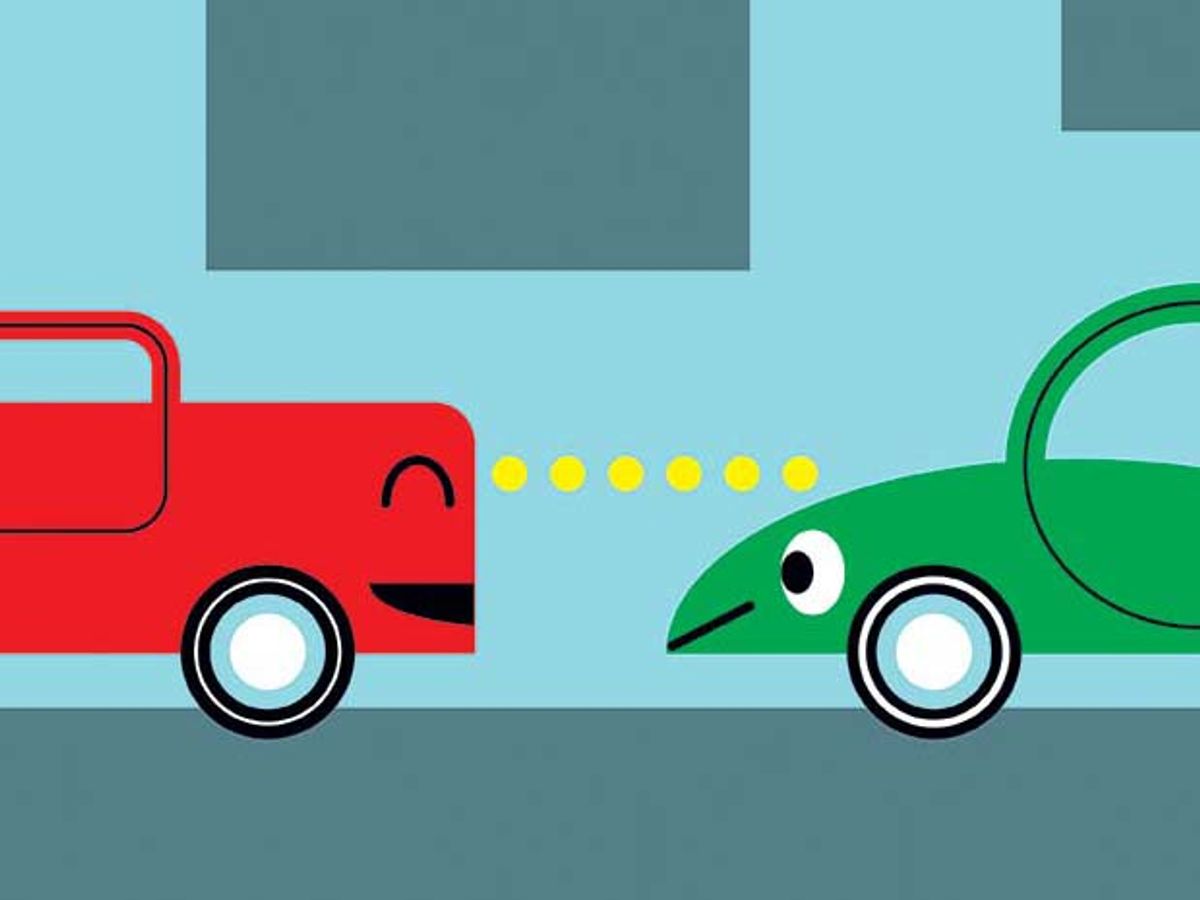Years ago, a British-branded auto company offered new owners an audio tutorial that boomed, “Who needs talking dashboards?” Thus did it sneer at the chattiness of competing cars.
Now, for the first time, a commitment has been made to build a car that truly talks, albeit only to other cars. Vehicle to vehicle communications (V2V) is coming soon, and it will come from General Motors, a company that can use some good publicity. On top of legal problems over its handling of a faulty ignition system, GM may well be facing the end of the long boom in car sales that helped to pull it out of bankruptcy.
The talking car, a Cadillac, will reach showrooms in the 2017 model year, said Mary Barra, the company’s chief executive, Sunday at the Intelligent Transport Systems World Congress in Detroit. “We’re doing it because it’s what customers around the world want."
GM is also doing it because the U.S. federal government has decreed that all new cars must eventually share information on safety and traffic conditions with other cars. Because rulemaking will not be done until 2016 at the earliest, G.M. will either have to finalize its own system rather late in the design process or get the entire industry to follow its own lead.
(Cars are likely to communicate using RF, but a number of technology suppliers and researchers think visible light communications—via onboard cameras and modulated LED headlights and tail lights—makes more sense.)
The chatty caddy will be in much the same position as the first telephone: it will have nobody to talk to. Unless, that is, the country can first install some communicative signposts, crosswalks and other road furniture. That would enable "vehicle-to-infrastructure" communication, and it will finally be possible to talk to a wall.
Early adopters will like it, no matter how few opportunities there are to gab with other gadgets, because this car will also be the first to carry Supercruise, a form of hands-off driving. It seems to be GM’s answer to the Mercedes-Benz Distronic system, introduced in this year’s top-of-the-line S Class sedan and detailed in our August 2014 issue. GM will go a bit further into robocar territory by not only keeping to its lane while maintaining its distance to the car in front but also by passing that car, if conditions warrant it.
Of course, Mercedes is working on that idea too. A few months ago some of that company's engineers took me for a ride in an experimental car that passed a slowpoke, all by itself, while driving on an autobahn outside Stuttgart.
Blending communication skills with automatic driving makes sense. An autonomous (or nearly autonomous) car can drive itself more safely by coordinating with its neighbors. It can also plot a better route if it can see the world through the eyes of other cars as well as through its own.
Philip E. Ross is a senior editor at IEEE Spectrum. His interests include transportation, energy storage, AI, and the economic aspects of technology. He has a master's degree in international affairs from Columbia University and another, in journalism, from the University of Michigan.



